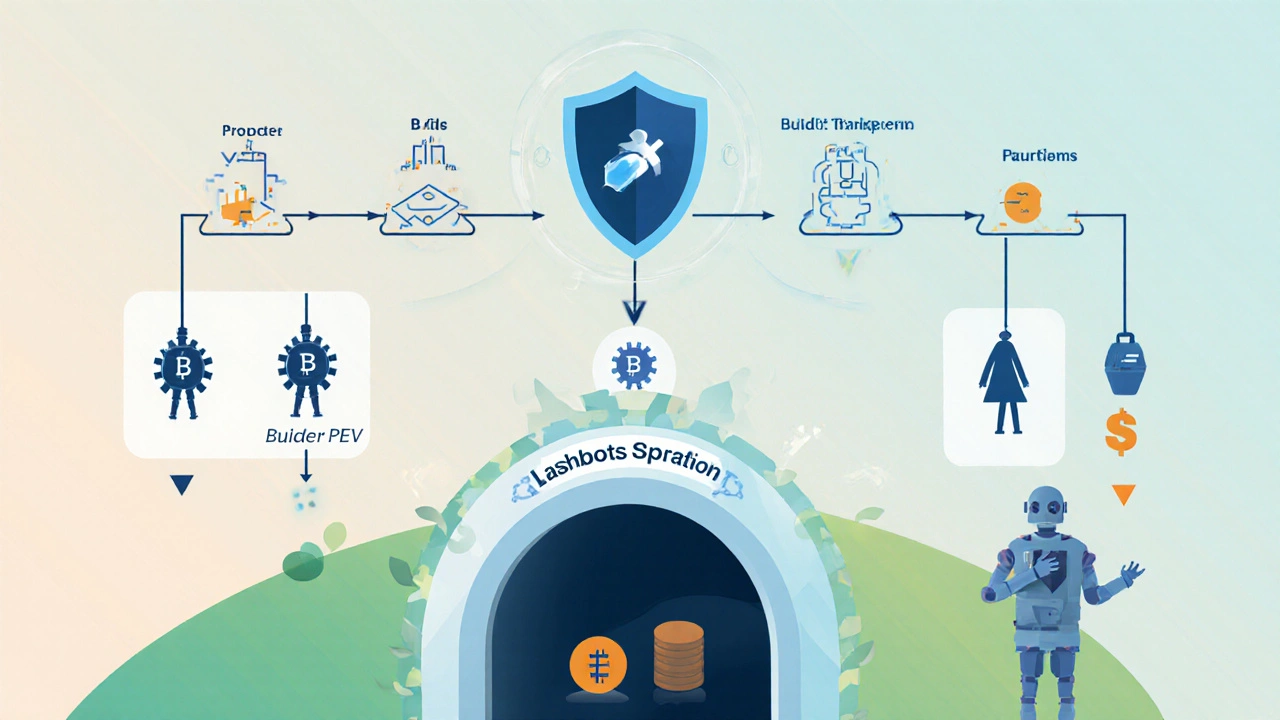Understanding MEV in Ethereum: A Complete Guide
 Oct, 1 2025
Oct, 1 2025
Ever wondered why some Ethereum transactions seem to jump the line or why you sometimes pay more gas than you expected? The hidden force behind those quirks is MEV - miner extractable value. In this guide we’ll break down what MEV is, how it works, who benefits, and what you can do to protect yourself.
Key Takeaways
- MEV stands for miner (now validator) extractable value - the profit miners can earn by reordering, including, or censoring transactions.
- It arises from transaction ordering, front‑running, back‑running, and sandwich attacks.
- Searchers, bots, and block‑producers are the main actors.
- MEV can increase gas fees, cause network instability, and affect user fairness.
- Mitigations like proposer‑builder separation (PBS) and Flashbots aim to make MEV more transparent and less harmful.
What is MEV?
MEV is a type of profit that block producers can capture by manipulating the order and inclusion of transactions within a block. In Ethereum’s proof‑of‑stake era, the term has broadened to “validator extractable value” but the core idea stays the same: anyone who builds a block can extract extra value beyond the standard block reward and transaction fees.
How Does MEV Manifest?
MEV isn’t a single trick; it’s a family of strategies that exploit the deterministic execution of smart contracts. The most common forms are:
- Transaction Ordering: By placing a profitable transaction before (front‑run) or after (back‑run) a target transaction, the block producer can capture value.
- Sandwich Attacks: A searcher inserts a transaction to buy an asset, lets the victim’s trade happen, then sells at a higher price.
- Arbitrage: Exploiting price differences across decentralized exchanges (DEXs) within a single block.
- Liquidation Capture: Jump‑starting liquidation transactions for under‑collateralized loans.
All of these rely on the fact that Ethereum’s state changes are deterministic - the same input order always yields the same result.
Key Players in the MEV Ecosystem
Understanding who does what helps demystify the flow of value.
- Validators are the entities that propose blocks in Ethereum’s proof‑of‑stake system. They decide transaction ordering and can keep a portion of MEV for themselves.
- Searchers are developers or bots that scan the mempool for profitable opportunities and submit bundled transactions to capture MEV.
- Builders specialize in constructing MEV‑rich blocks and sell them to proposers via private channels.
- Users are everyday wallet owners whose transactions can be reordered, censored, or front‑run.

Impact of MEV on Users and the Network
MEV isn’t just an abstract concept; it has real‑world consequences:
- Higher Gas Fees: Searchers often outbid regular users with higher gas prices, pushing average fees up.
- Transaction Censorship: Validators may drop low‑profit transactions, leading to delays.
- Chain Instability: Large MEV opportunities can cause “fork‑spraying” where multiple validators race to claim the same profit, temporarily increasing orphan rates.
- Unfair User Experience: Front‑running reduces the expected output of trades, especially on DEXs.
Mitigation Strategies
Research labs and community groups have built tools to tame MEV’s worst effects.
| Technique | How it Works | Pros | Cons |
|---|---|---|---|
| Proposer‑Builder Separation (PBS) | Proposers obtain blocks from competitive builders via sealed bids. | Reduces incentive for validators to manipulate blocks directly. | Requires new client implementations. |
| Flashbots Auction | Private mempool where searchers submit bundles directly to miners. | Transparency of bids, less front‑running. | Still centralized around Flashbots. |
| MEV‑Boost | Middleware that connects proposers to multiple builders. | Encourages market competition. | Complex setup for operators. |
| Transaction Encryption (Tessera) | Encrypts transaction data until included, hiding order‑sensitive details. | Prevents searchers from seeing profitable trades early. | Adds latency, requires protocol changes. |
These solutions aim to separate the profits of block construction from block proposal, making the market for MEV more competitive and less harmful.
Practical Tips for Everyday Users
- Set a Reasonable Gas Price: Use platforms that suggest gas based on recent MEV activity, rather than the lowest possible price.
- Use Private Transaction Relays: Services like Flashbots Protect let you send transactions directly to miners, bypassing the public mempool.
- Monitor Slippage Settings: Lower slippage on DEX trades reduces the profit margin for sandwich attackers.
- Bundle Your Transactions: When performing a sequence of dependent actions, bundle them to avoid partial execution.
- Stay Informed: Follow community updates on PBS rollout and new MEV‑reduction tools.

Future Outlook
Ethereum’s roadmap includes full implementation of proposer‑builder separation in the upcoming Shanghai‑plus upgrade. As more validators adopt PBS, the direct extraction of MEV by block producers should shrink, pushing the market towards a more open builder ecosystem. Meanwhile, research into cryptographic transaction ordering (e.g., Tendermint‑style randomness) promises to make front‑running even harder.
Quick Checklist - Is Your Transaction MEV‑Safe?
- Did you use a gas price higher than the median? ✅
- Did you send via a private relay or Flashbots Protect? ✅
- Is your slippage tolerance set below 0.5% for high‑volume swaps? ✅
- Are you aware of any large arbitrage opportunities in the same block? ❓
- Do you follow validator‑builder market updates? ❓
Frequently Asked Questions
What does MEV stand for?
MEV means miner (or validator) extractable value - the extra profit a block producer can earn by reordering, including, or censoring transactions.
Can I completely avoid MEV?
It’s hard to eliminate MEV entirely because the protocol’s deterministic execution creates opportunities. However, using private relays, reasonable gas prices, and low slippage can dramatically lower your exposure.
How does PBS reduce MEV?
Proposer‑builder separation forces validators to obtain blocks from competitive builders through sealed bids. This separates the profit‑making block construction from block proposal, reducing the incentive for validators to manipulate transaction order themselves.
What is a “searcher” in the MEV world?
A searcher is a bot or developer who scans the transaction pool for profitable patterns, such as arbitrage or sandwich opportunities, and submits bundled transactions that capture the associated MEV.
Is MEV only a problem for traders?
Traders feel it most directly, but anyone sending transactions - from NFT minting to DeFi borrowing - can be impacted by higher fees, delayed inclusion, or altered outcomes.
